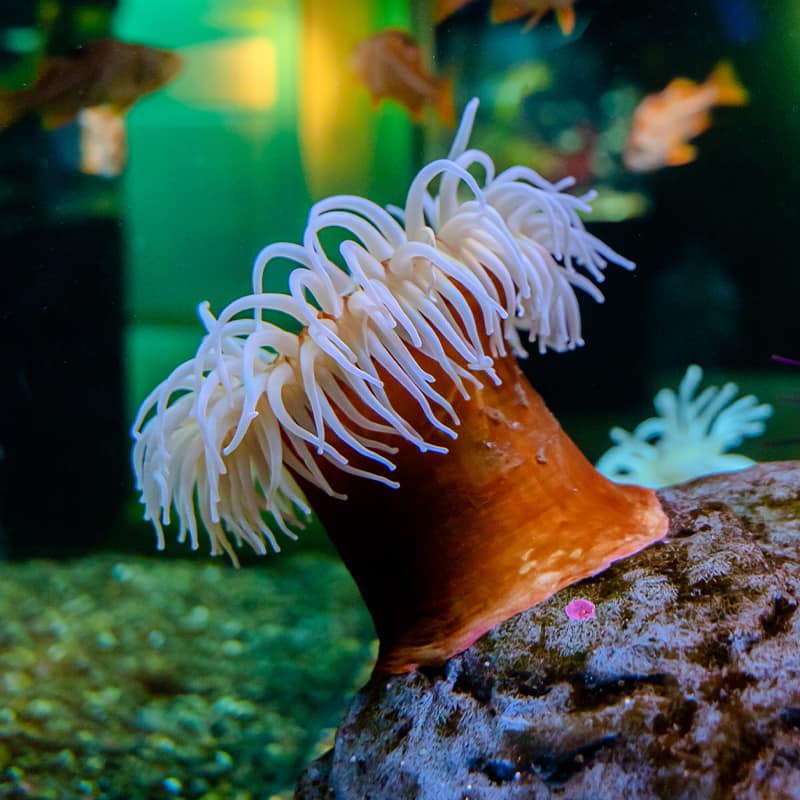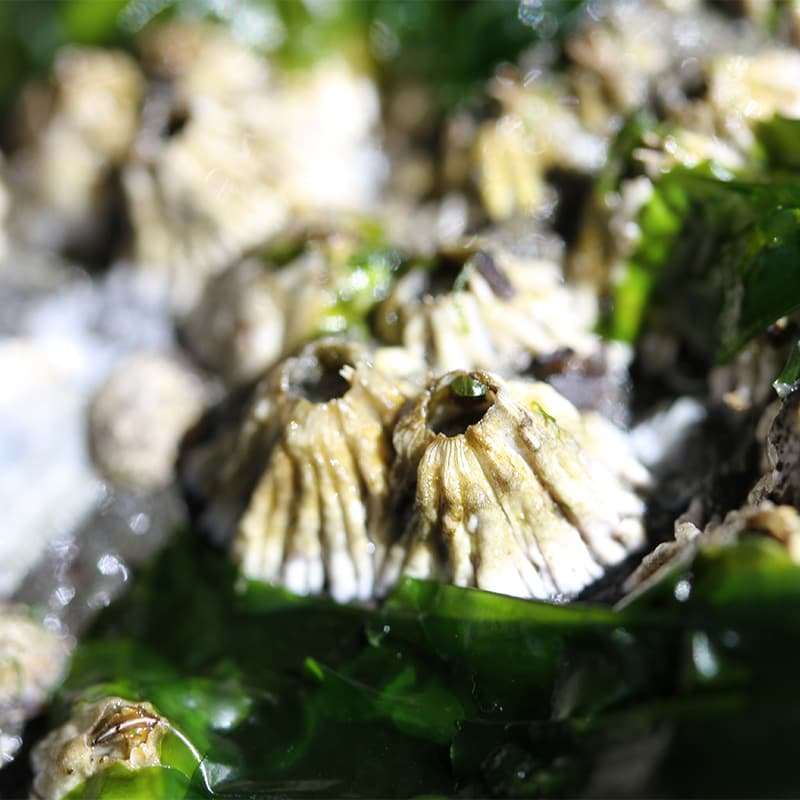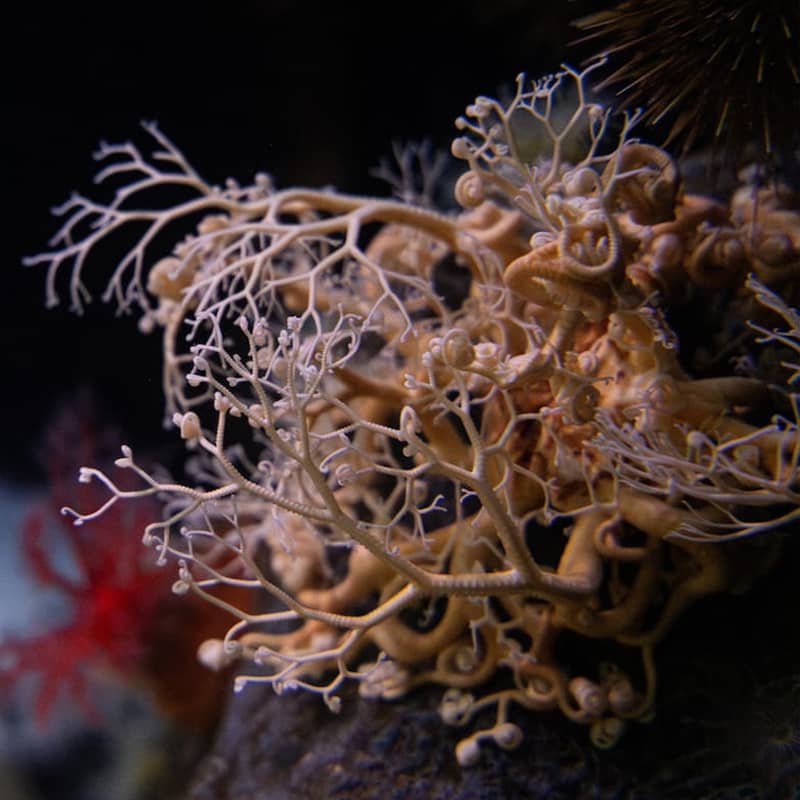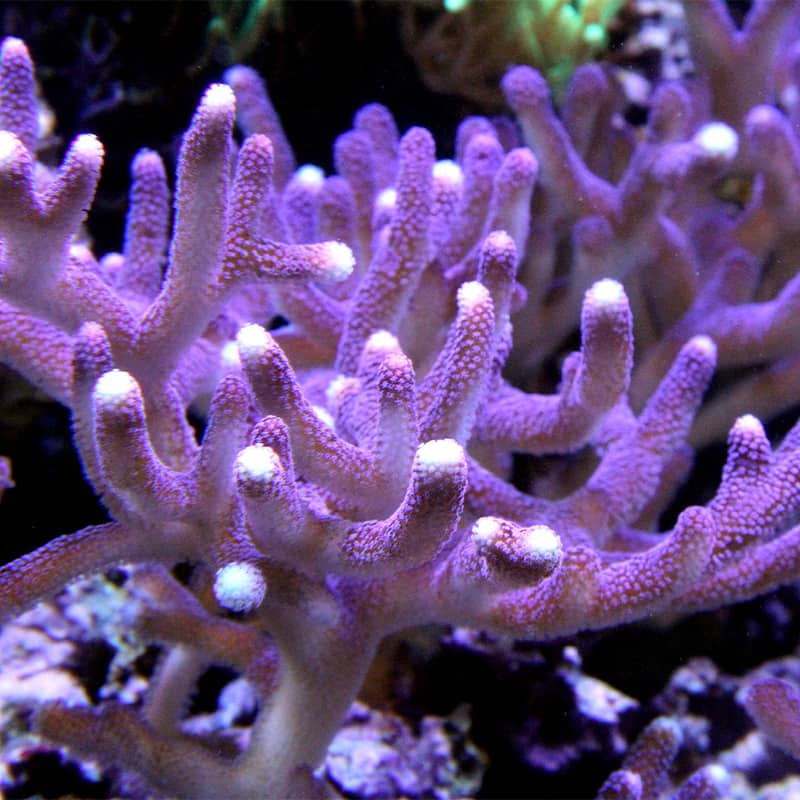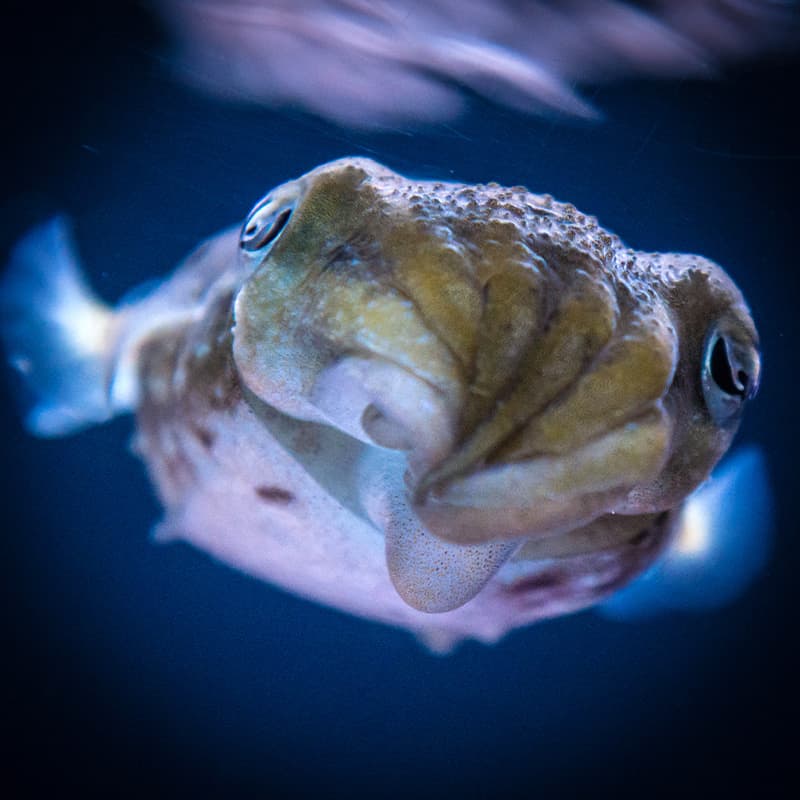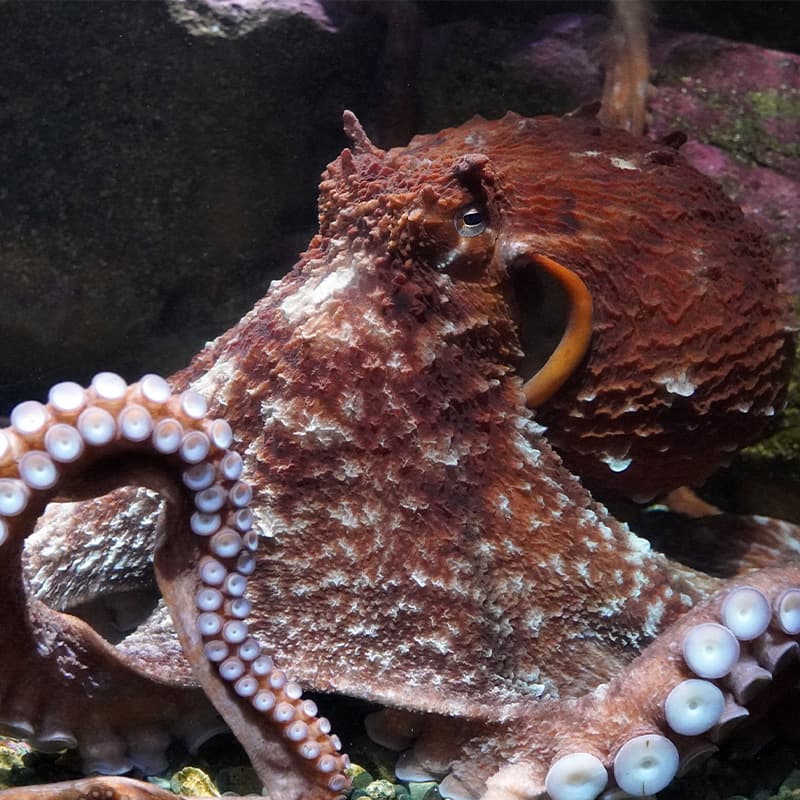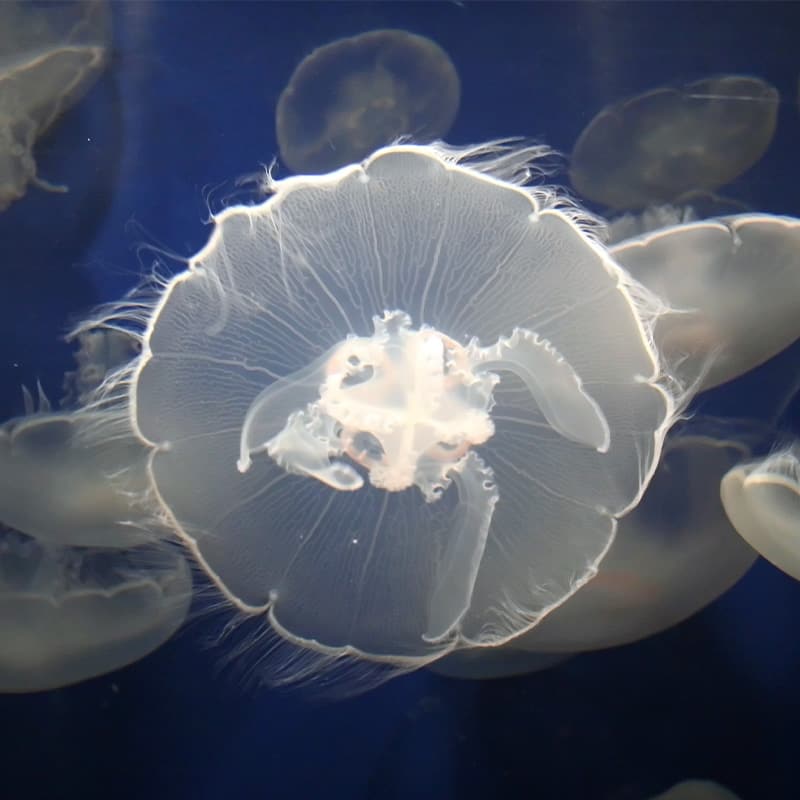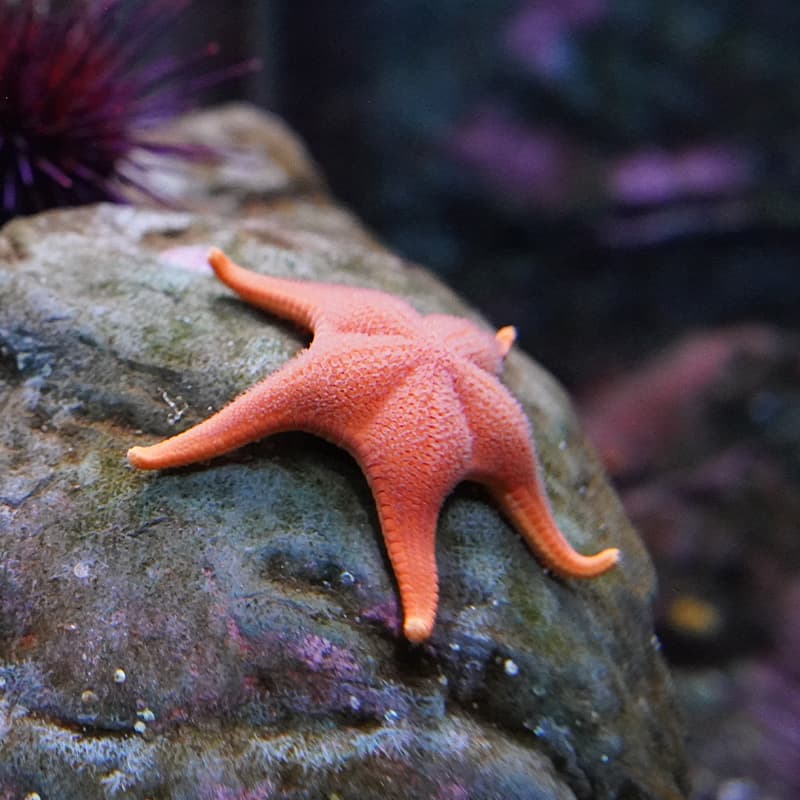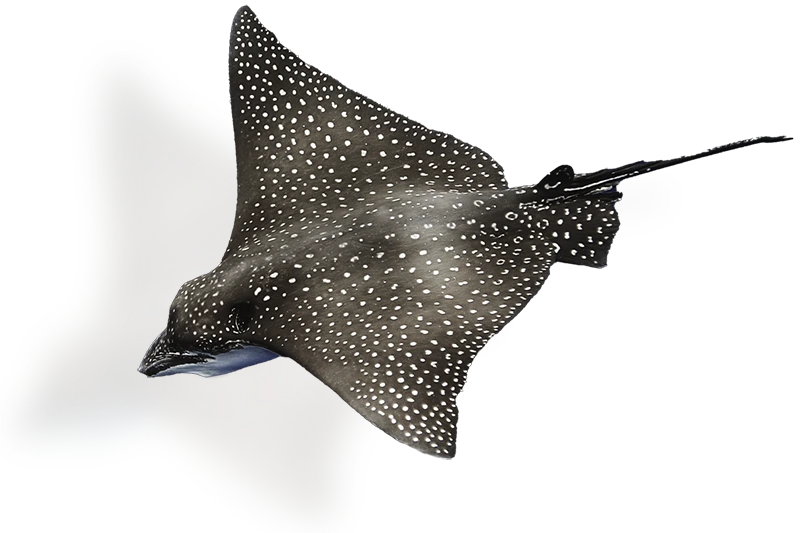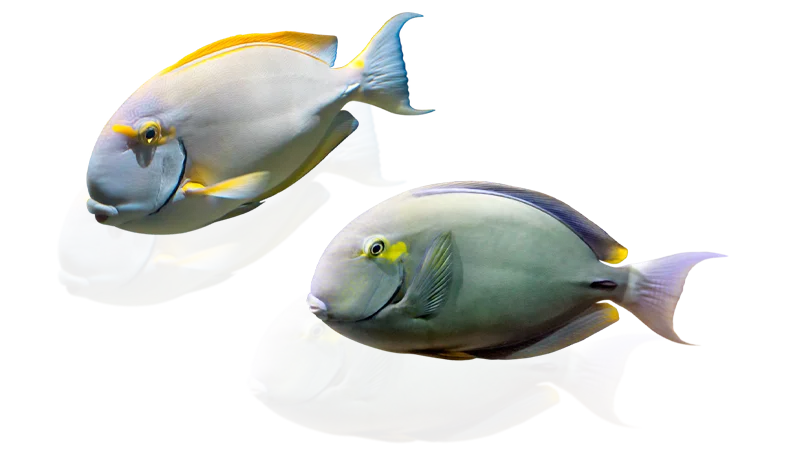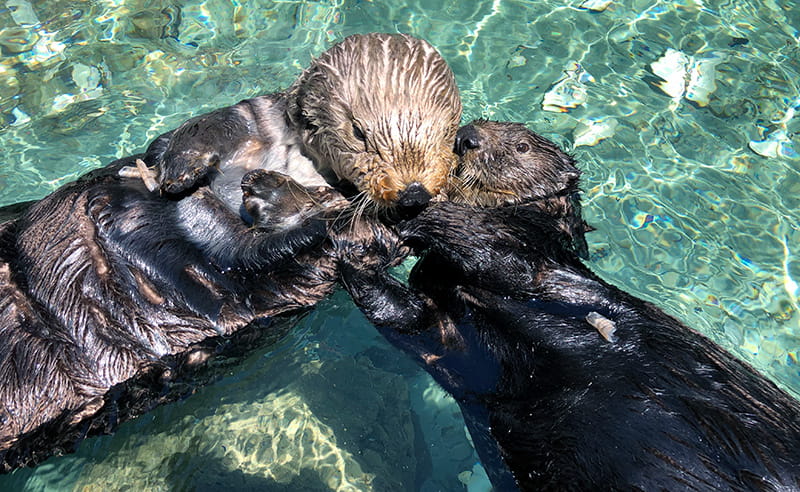- Invertebrates
Hermit crab
The animal that carries its home on its back
Hermit crabs evolved from free-living crabs—and some hermit crab species have evolved back into free-living species, including Alaskan king crabs and porcelain crabs. There are over 500 species of hermit crabs around the world, and they’ve evolved a unique body shape to fit into their shell homes. Unlike free-living crabs, their abdomens aren’t covered in a hard exoskeleton but rather a thin, soft one; their abdomens are also twisted to fit the spiral cavity of the snail shells in which they make their homes.
At the Aquarium
- Habitats throughout the Aquarium
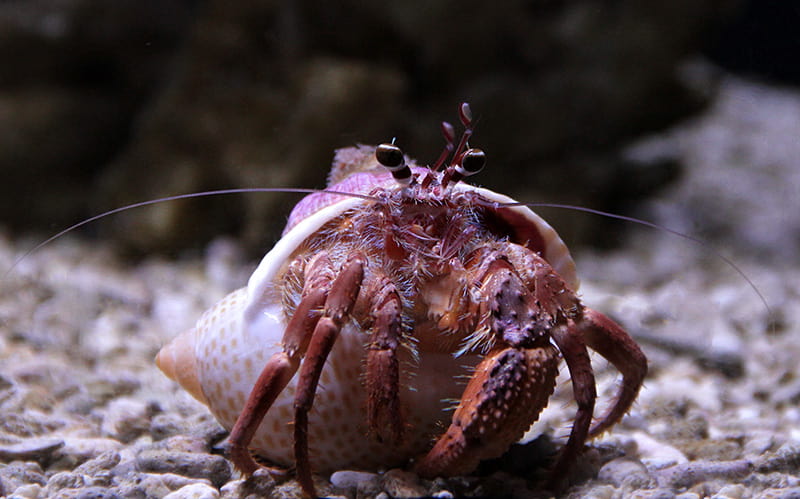
Opportunistic eaters
Hermit crabs are pretty easygoing about what they eat. In fact, they’ll dine on just about anything they can find in the water that surrounds them, including small fish, invertebrates such as worms, plankton and any food particles that happen to be floating by.
Delicious morsels
Hermit crabs are also high on the list of desired foods for many predators. Fish such as pricklebacks, gunnels, clingfish and snailfish prey on hermit crabs, as do sea stars, larger crabs, gulls and crows.
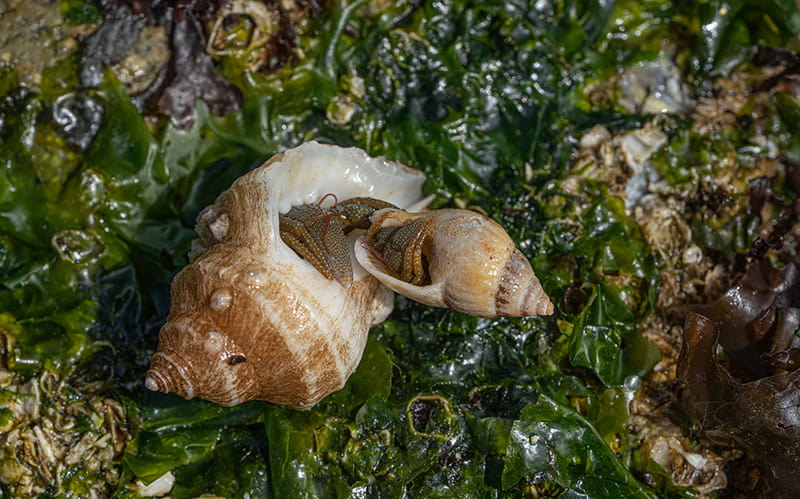
Aggressive house hunters
Contrary to popular belief, hermit crabs don’t kill the snails in whose shells they make their homes. They’re actually able to smell dead or dying snails, which can lead them to a potential shell. But competition for such shells can be fierce. Hermit crabs may fight to the death in pursuit of a shell. And, as they grow, they must seek out new shells in which to live.
Night owls
Hermit crabs are nocturnal, which means they’re much more active at night than they are during the day. To see them scuttling around, visit a Puget Sound tide pool at night during a low tide—be sure to bring a flashlight! You can also see hermit crabs at the Seattle Aquarium, in our Life on the Edge habitats.
Not truly hermits
Contrary to their name, hermit crabs aren’t solitary creatures. In the wild, they’re found in groups of 100 or more. Social behavior in hermit crabs is also sometimes observed during mating, when the male may stroke and tap the female’s claws—or grab her shell and carry her around!—before mating begins.
Quick facts
Hermit crabs sport a soft exoskeleton and a twisted abdomen to fit into snail shells.
As they grow, these creatures look for another empty shell to move into.
Little but fierce! Hermit crabs may fight to the death in pursuit of a new shell.
